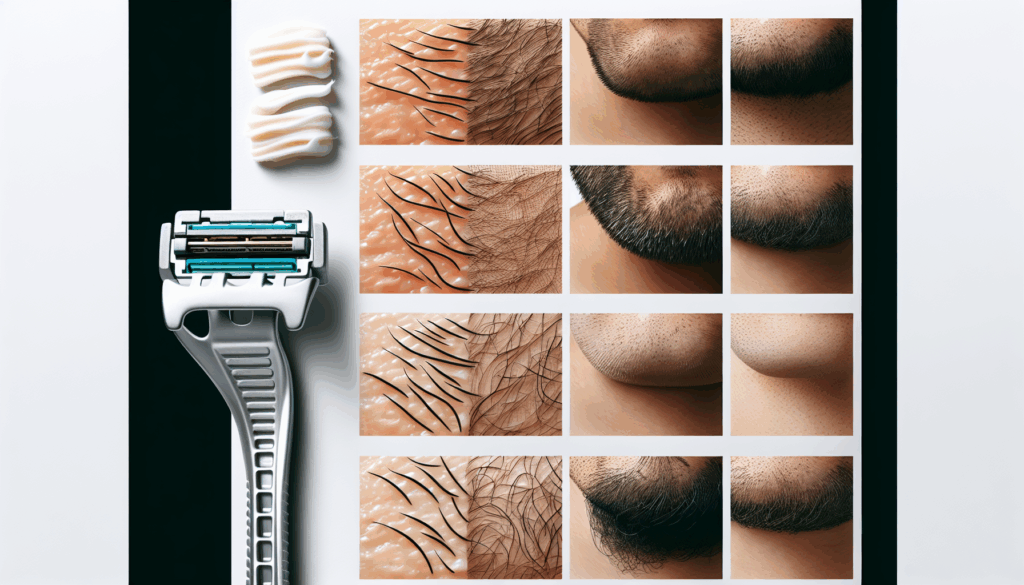Why Do Some Hairs Grow Back Faster Than Others?
Have you ever noticed that after a waxing session, some hairs seem to grow back faster than others? It can be quite frustrating, right? Well, let’s delve into the reasons why this happens and what you can do about it.
What Factors Affect Hair Growth Rate?
Hair growth can be influenced by various factors such as genetics, age, hormones, and overall health. These factors play a significant role in determining how quickly your hair regrows after waxing.
Genetics
Your genes play a crucial role in determining the speed of your hair growth. Some individuals are genetically predisposed to have faster hair growth cycles than others. This means that if your family members tend to have fast-growing hair, you are more likely to experience the same.
Age
As we age, our hair growth rate tends to slow down. This is due to changes in hormone levels and a decline in cell regeneration. Older individuals may notice that their hair grows back slower compared to when they were younger.
Hormones
Hormones play a vital role in regulating the hair growth cycle. Fluctuations in hormone levels, such as during puberty, pregnancy, or menopause, can affect the rate at which your hair grows back after waxing. Hormonal imbalances can lead to faster or slower hair regrowth.
Overall Health
Your overall health and wellbeing can impact the speed of hair growth. Poor nutrition, stress, and certain medical conditions can all affect the health of your hair follicles and slow down the regrowth process. Maintaining a healthy lifestyle can promote faster hair growth.
Understanding the Hair Growth Cycle
To comprehend why some hairs grow back faster than others, it’s essential to understand the hair growth cycle. The hair growth cycle consists of three main phases: anagen, catagen, and telogen.
Anagen Phase (Growing Phase)
During the anagen phase, your hair actively grows. This phase can last anywhere from two to six years, depending on individual factors. The length of the anagen phase determines how long your hair will grow before shedding.
Catagen Phase (Transitional Phase)
The catagen phase is a transitional phase where your hair follicles shrink and detach from the blood supply. This phase lasts for about two to three weeks and signals the end of the active growth phase.
Telogen Phase (Resting Phase)
In the telogen phase, your hair follicles are at rest, and no new growth occurs. This phase can last for around three to four months before the old hair sheds and a new hair begins to grow, signaling the start of a new hair growth cycle.

How Waxing Affects Hair Growth
Waxing is a popular method for hair removal that can impact the hair growth cycle. Understanding how waxing affects your hair growth can help shed light on why some hairs grow back faster than others.
Root Extraction
When you wax, the hair is removed from the root, which can disrupt the hair growth cycle. As the hair follicle needs to regenerate before producing a new hair, this can result in a delay in hair regrowth. However, hairs that are in the anagen phase may regrow faster than those in the telogen phase.
Consistent Waxing
Consistent waxing over time can weaken the hair follicles, resulting in slower hair regrowth. Regular waxing can lead to finer, sparser hair growth, making it appear like the hair is growing back slower than before.
Hair Thickness
The thickness of your hair can also affect how fast it grows back after waxing. Thicker hairs usually have a longer anagen phase, which means they take longer to shed and regrow. Thinner hairs, on the other hand, may regrow faster due to a shorter anagen phase.
Tips for Slowing Down Hair Regrowth
If you’re tired of dealing with hairs that seem to grow back faster than others, here are some tips to help slow down the regrowth process.
Exfoliation
Regular exfoliation can help prevent ingrown hairs and promote smoother skin. By removing dead skin cells, you can reduce the likelihood of hair follicles becoming blocked, which can lead to faster regrowth.
Moisturize
Keeping your skin hydrated and moisturized can improve the overall health of your hair follicles. Healthy follicles are less likely to produce fast-growing hairs, so be sure to moisturize regularly.
Hair Growth Inhibitors
Consider using hair growth inhibitors to slow down the regrowth process. These products can help reduce the thickness and frequency of hair regrowth, making it easier to manage unwanted hair.
Professional Treatments
For a more permanent solution, you may want to consider professional treatments such as laser hair removal. Laser treatments target the hair follicles, preventing them from regrowing hair in the future.

In Conclusion
While some hairs may seem to grow back faster than others after waxing, understanding the factors that influence hair growth can help you manage your regrowth process more effectively. By following the tips mentioned above and taking care of your skin and hair, you can enjoy smoother, softer skin for longer periods between waxing sessions. Remember, everyone’s hair growth rate is unique, so it’s essential to find what works best for you.
